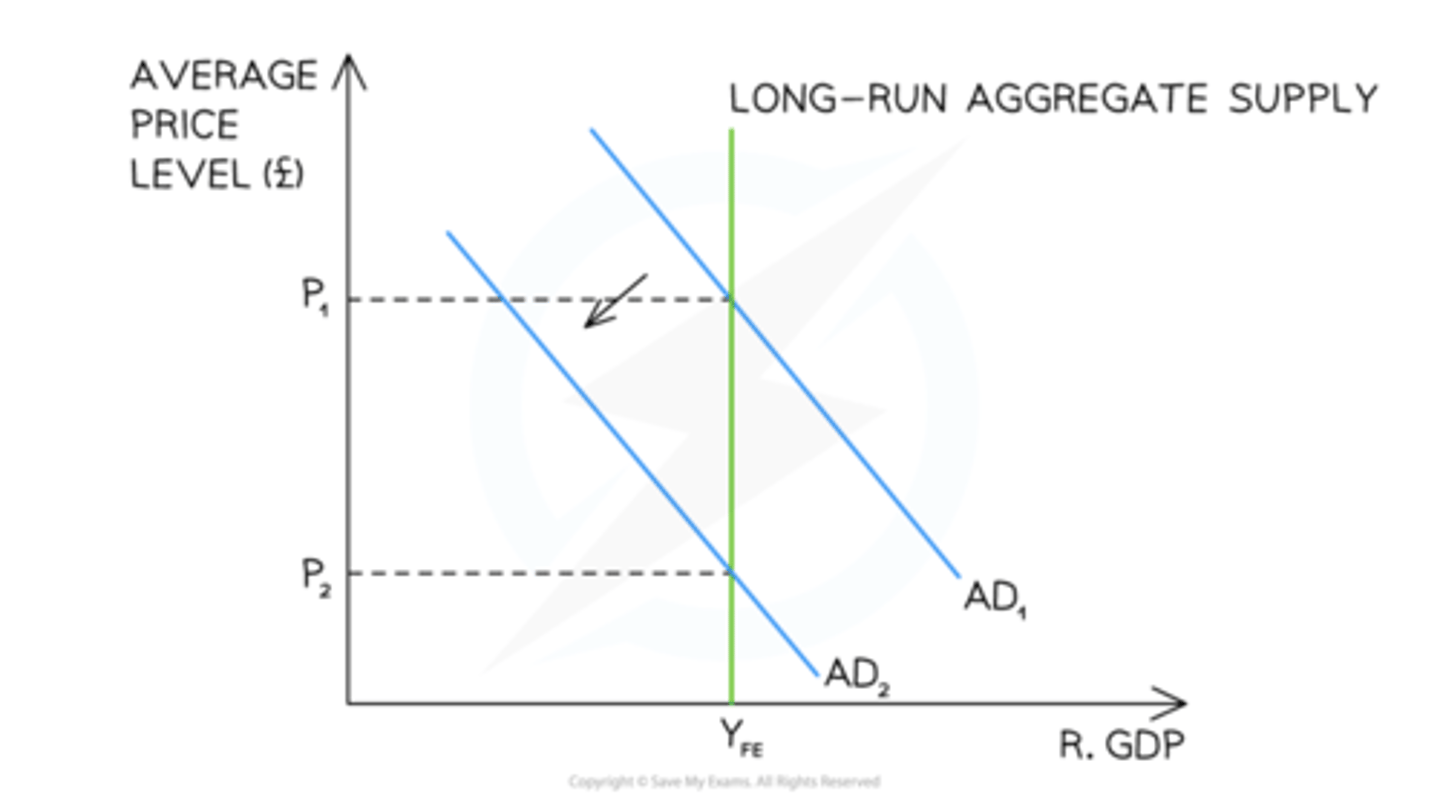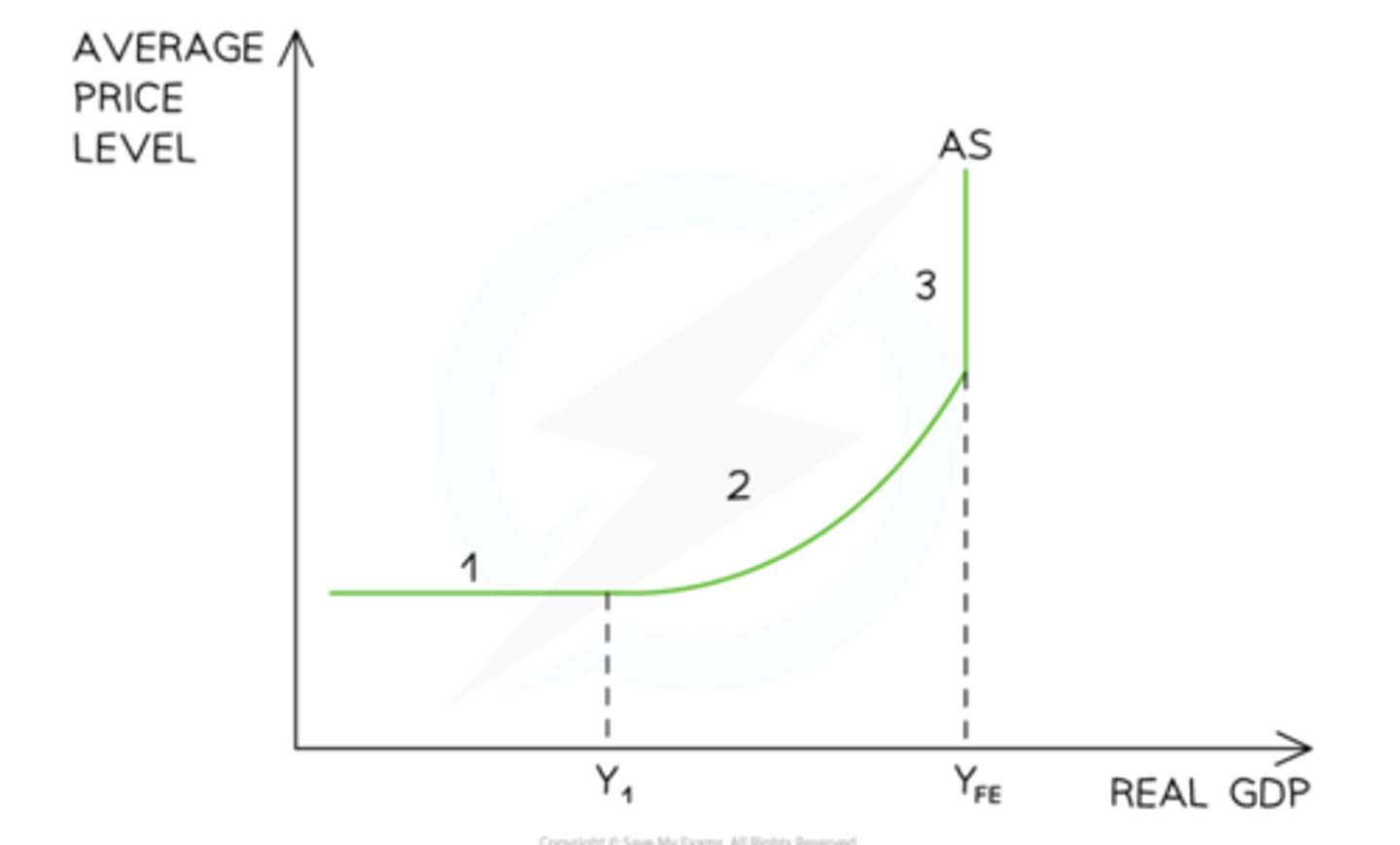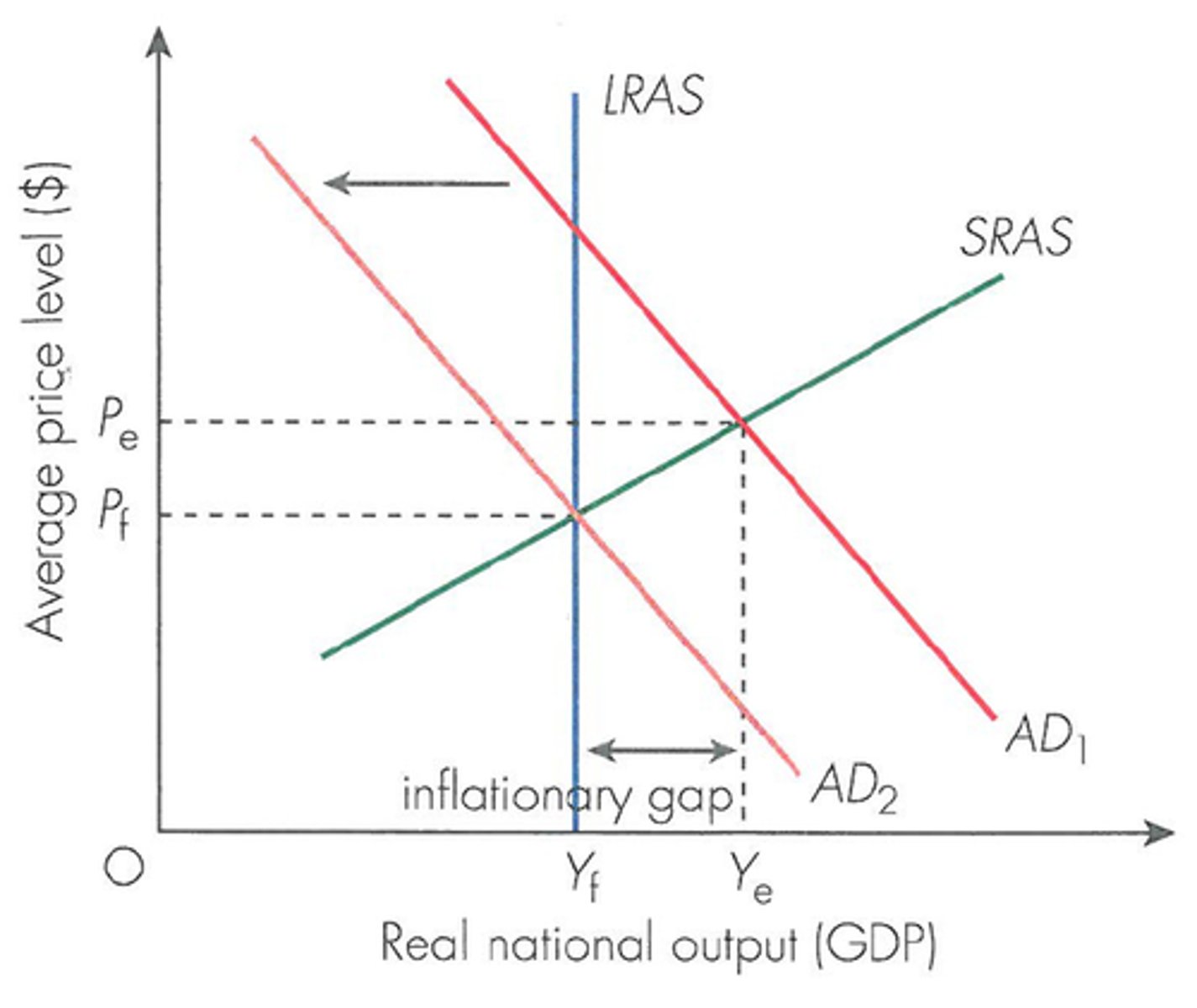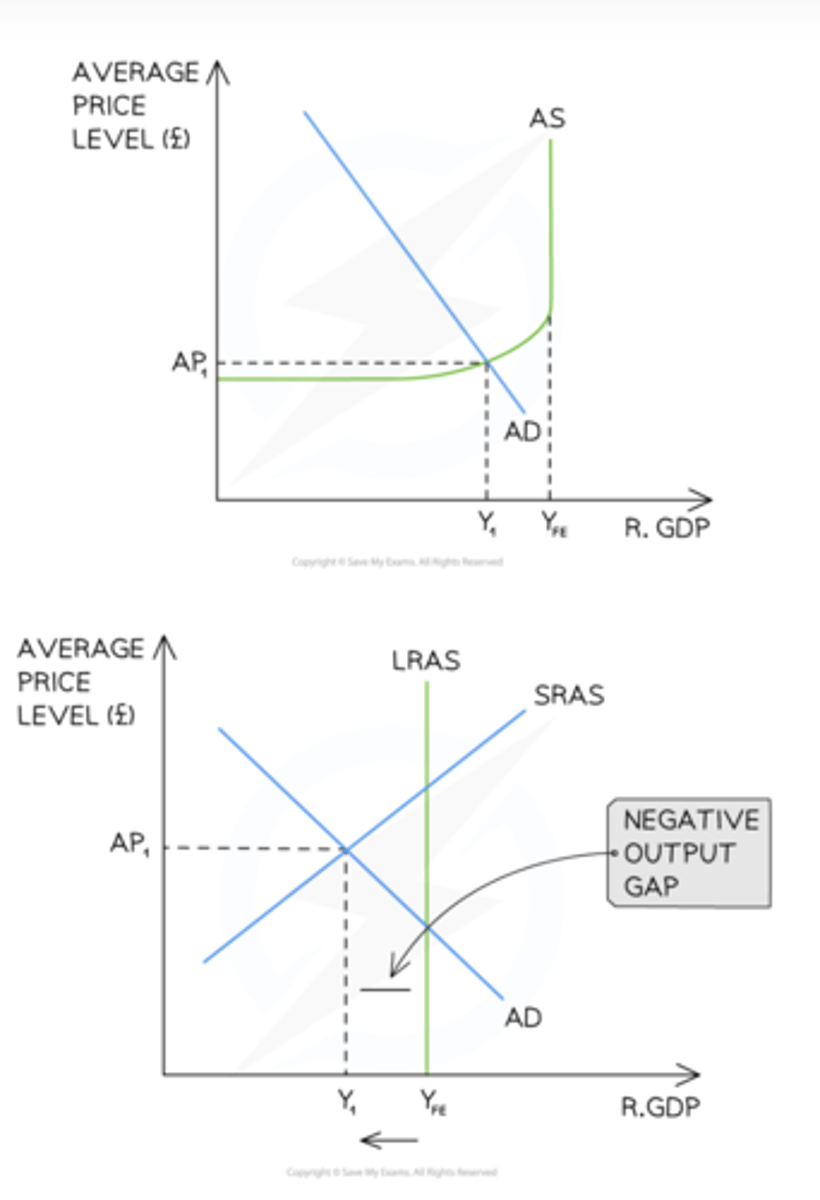IB Economics - 3.2
1/11
There's no tags or description
Looks like no tags are added yet.
Name | Mastery | Learn | Test | Matching | Spaced |
|---|
No study sessions yet.
12 Terms
Aggregate Demand
The total demand for all goods/services in an economy at any given average price level.
C + I + G + (X-M) (the value of each component can vary between different countries)
Increase in AD = Economic growth
AD Curve
Similar to normal demand curve
- Downward sloping
- Movement along is due to changes in price level
Shifts in AD curve
Due to changes in determinants of AD
C: Consumer confidence, interest rates, wealth, income taxes, level of debt, expectations of future price levels.
I: Interest rates, business confidence, technology, business taxes, level of debt.
G: Political priorities, Economic priorities
(X-M): Income of trading partners, exchange rates, trade policies
Aggregate Supply
The total supply of goods/services produced within an economy at a specific price level at a given time
SRAS Curve
Similar to a supply curve
Movements are due to changes in average price level
Shifts are due to non-price factors
Non-price determinants of SRAS
Changes in wages
Changes in non-labour resource prices
Changes in indirect taxes
Changes in subsidies offered to firms
Supply shocks
Monetarist View of LRAS
Perfectly inelastic at point of full employment
In the long-run an economy will always return to the full employment level of output
During inflationary and deflationary gaps, they believe the economy will self-correct and return to the long-run level of output but at higher or lower price levels.

Keynesian view of AS
3 sections:
1. Elastic section: due to spare capacity in the economy, firms will increase output without raising prices
2. Relatively-price elastic section: firms start to bid with each other for available resources and price levels begin to rise
3. Perfectly-inelastic section: Full employment of all available resources. More inflation as firms compete for resources
The economy will not always self-correct and return to full employment level of output and can get stuck at an equilibrium below the full employment level. This is because of FoP Cost inflexibility, such as sticky wages.
Also believes govt expenditure can shift Aggregate Demand

Output Gap
Difference between actual level of output and the maximum potential level of output
Can be difficult to measure because it is difficult to know the maximum productive potential of an economy.
Inflationary Gap
Real GDP > Potential Real GDP

Deflationary Gap
Potential Real GDP > Real GDP
Spare capacity exists

Factors that shift the LRAS
Changes in the quantity or quality of factors of production (technology, efficiency)
Changes in institutions